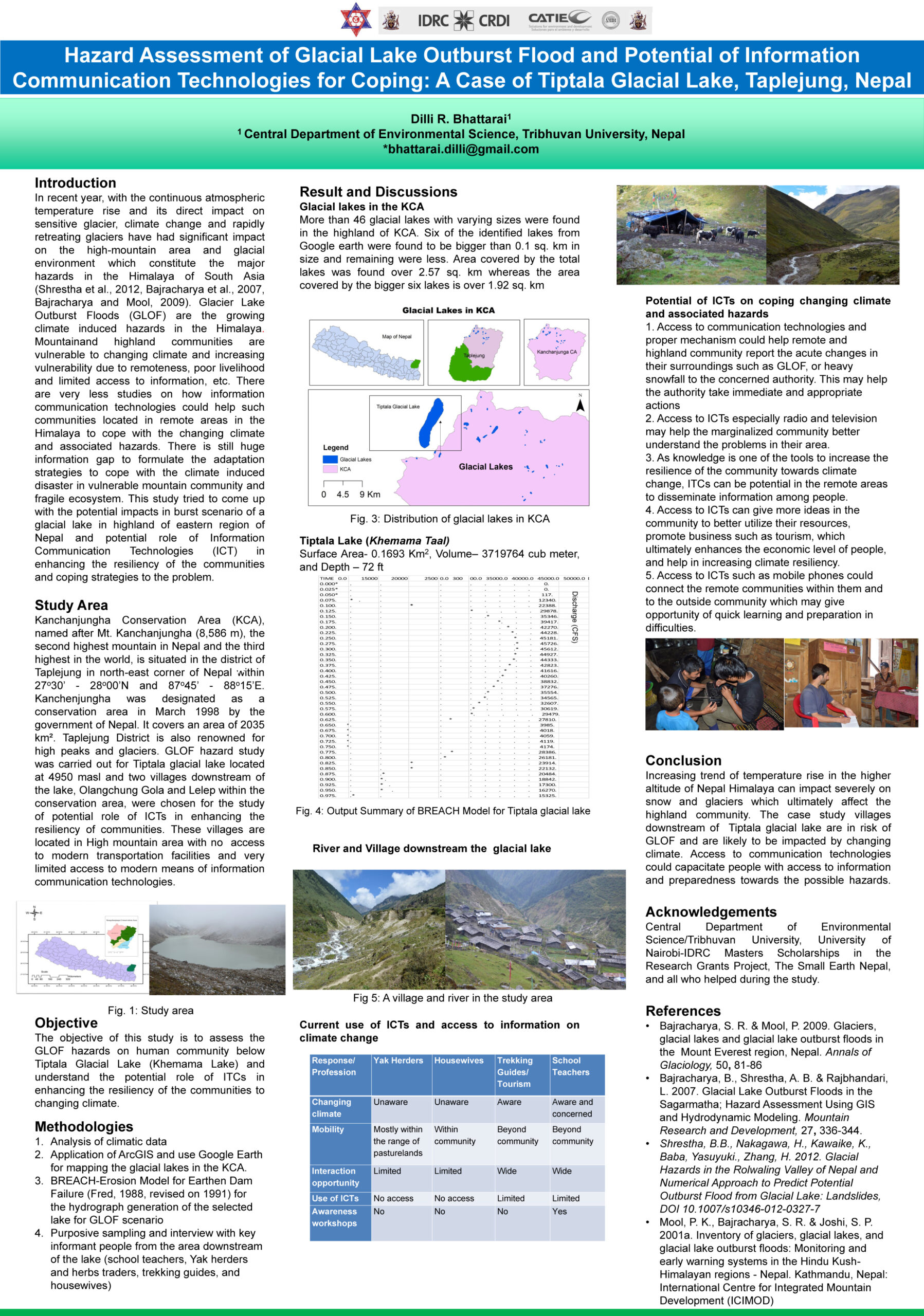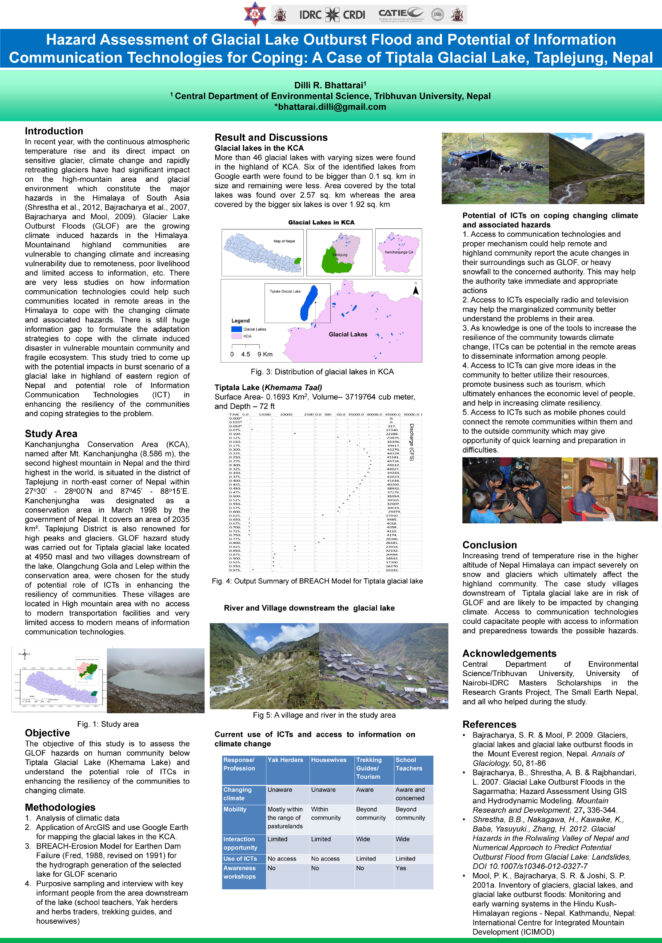Hazard Assessment of Glacial Lake Outburst Flood and Potential of ICTs for Coping: A Case of Tiptala Glacial Lake, Taplejung, Nepal


Click to enlarge.
Introduction
In recent year, with the continuous atmospheric temperature rise and its direct impact on sensitive glacier, climate change and rapidly retreating glaciers have had significant impact on the high-mountain area and glacial environment which constitute the major hazards in the Himalaya of South Asia (Shrestha et al., 2012, Bajracharya et al., 2007, Bajracharya and Mool, 2009). Glacier Lake Outburst Floods (GLOF) are the growing climate induced hazards in the Himalaya. Mountainand highland communities are vulnerable to changing climate and increasing vulnerability due to remoteness, poor livelihood and limited access to information, etc. There are very less studies on how information communication technologies could help such communities located in remote areas in the Himalaya to cope with the changing climate and associated hazards. There is still huge information gap to formulate the adaptation strategies to cope with the climate induced disaster in vulnerable mountain community and fragile ecosystem. This study tried to come up with the potential impacts in burst scenario of a glacial lake in highland of eastern region of Nepal and potential role of Information Communication Technologies (ICT) in enhancing the resiliency of the communities and coping strategies to the problem.
Background Information
Kanchanjungha Conservation Area (KCA), named after Mt. Kanchanjungha (8,586 m), the second highest mountain in Nepal and the third highest in the world, is situated in the district of Taplejung in north-east corner of Nepal within 27o30’ – 28o00’N and 87o45’ – 88o15’E. Kanchenjungha was designated as a conservation area in March 1998 by the government of Nepal. It covers an area of 2035 km². Taplejung District is also renowned for high peaks and glaciers. GLOF hazard study was carried out for Tiptala glacial lake located at 4950 masl and two villages downstream of the lake, Olangchung Gola and Lelep within the conservation area, were chosen for the study of potential role of ICTs in enhancing the resiliency of communities. These villages are located in High mountain area with no access to modern transportation facilities and very limited access to modern means of information communication technologies.
Potential of ICTs on Coping Changing Climate and Associated Hazards
1. Access to communication technologies and proper mechanism could help remote and highland community report the acute changes in their surroundings such as GLOF, or heavy snowfall to the concerned authority. This may help the authority take immediate and appropriate actions
2. Access to ICTs especially radio and television may help the marginalized community better understand the problems in their area.
3. As knowledge is one of the tools to increase the resilience of the community towards climate change, ITCs can be potential in the remote areas to disseminate information among people.
4. Access to ICTs can give more ideas in the community to better utilize their resources, promote business such as tourism, which ultimately enhances the economic level of people, and help in increasing climate resiliency.
5. Access to ICTs such as mobile phones could connect the remote communities within them and to the outside community which may give opportunity of quick learning and preparation in difficulties.
Conclusion
Increasing trend of temperature rise in the higher altitude of Nepal Himalaya can impact severely on snow and glaciers which ultimately affect the highland community. The case study villages downstream of Tiptala glacial lake are in risk of GLOF and are likely to be impacted by changing climate. Access to communication technologies could capacitate people with access to information and preparedness towards the possible hazards.
Poster Contact:
The original poster was produced by Dilli R. Bhattarai at Tribhuvan University, Nepal.
This poster is one of the posters featured at the 9th International Conference on Community-Based Adaptation (CBA9) in Nairobi, Kenya, from April 24-30 2015. The CBA series of conferences focus on the latest developments in community-based adaptation to climate change. The theme of this year’s event was “Measuring and enhancing effective adaptation”, and all the posters presented at the conference were summaries of projects related to the conference theme. For more information about CBA9, visit: www.cba9.org. If you want to learn more about community based adaptation, please visit the GICBA platform on weADAPT.
(0) Comments
There is no content